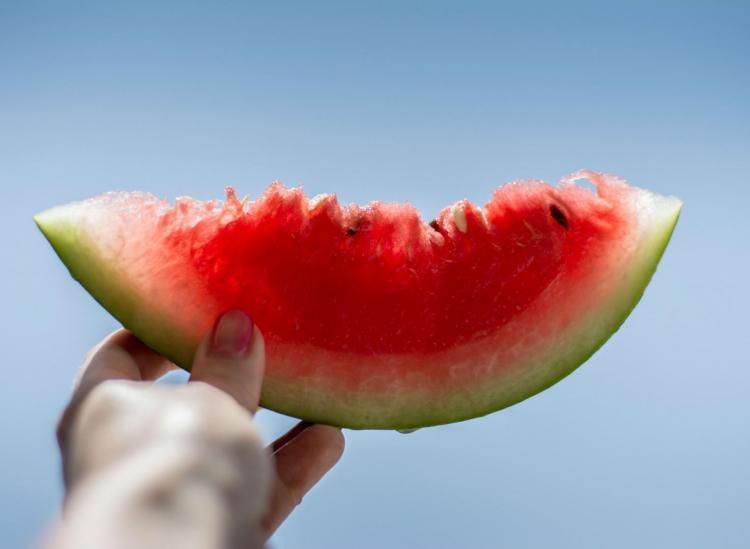You Can Turn These Table Scraps Into Sustainable Snacks

Unsplash
When you’re prepping a meal and cooking away, it’s easy to waste food. If a recipe calls for a bunch of chopped vegetables, you might throw out all of the stems and leafy green scraps without thinking about it. After you spend your hard-earned dollars on groceries it sucks to waste. The good news? You can turn beet greens into a sauteed side dish or turn leftover watermelon rinds into a tangy, crunchy snack. Here’s how you can turn your table scraps into sustainable snacks.
Beet Greens
Usually, when you cook with beets you cut off the beetroot or the bulb section and roast it, sauté it or steam it. You don’t think about the leafy green part, which is just as good to cook with. Beet greens are best within two or three days after you buy them. You can sauté them with garlic, salt and olive oil or add them to a salad with feta cheese or make them into a Moroccan appetizer. It’s basically like cooking with spinach.
Potato Peels
Potatoes are one of the cheapest foods to buy, but there’s a good chance you throw away your potato peels. Next time you go to scoop them up and head for the garbage, think twice. You can make delicious, crispy snacks right in the oven. If you’re making mashed potatoes or some kind of potato dish that might take a little longer, you can crisp up these skins in no time for a light snack beforehand. All you need is a baking sheet, olive oil, salt, pepper and toppings like chives, scallions and your favorite cheese. You can also use the peels to help flavor a vegetable stock or soup.
Celery Leaves
If you’re cutting up a bunch of veggies for soup, celery is always one of the main players to throw in there, especially with chicken soup or matzah ball soup. There are plenty of uses for celery stems so don’t ditch them. You can stir them into a pasta dish, grind them up in a pesto, add them to a stir-fry or use them in a salad. With a pretty bright green color, celery leaves make an easy garnish for whatever you’re whipping up.
Citrus Peels
Save your orange and lemon peels for homemade cocktails. If you’re making an Old Fashioned, orange peels are a necessity. You can zest your lemon and orange with a microplane and use it for baking. Sprinkle some of the zest on top of a meat or pasta dish to give it a citrusy kick. It’s also relatively easy to make your own candied orange peel as a fruity snack. If you’re roasting carrots, add some lemon peel on top before you put them in the oven. When the vegetables roast and become sweeter, the citrusy rind adds a complimenting tartness.
Watermelon Rinds
When you tackle cutting up a whole watermelon, you don’t have to throw the rinds away. One of the best things to do with the rinds is to pickle them. You’ll want to leave yourself a few days to get the right amount of tangy flavor. Here’s a recipe that uses serrano chili, ginger, star anise and takes at least 12 hours to pickle. You can add them to salads, serve them alongside a pork dish or just snack on them like you would pickles. Watermelon rinds are also great in salsa or instead of cabbage in a slaw.
Carrot Peels
If you have leftover peels from vegetables like carrots or parsnips, they’re perfectly good to eat as long as you wash them first. You can save the peels to make a vegetable stock or mix up the peels with a little flour, herbs and egg and then fry them in a little oil over medium heat to make vegetable fritters. If you want to make it easy for yourself, put them in the oven and roast them at 350 degrees for 15 to 20 minutes until they’re crispy as a chip substitute.
Banana Peels
Depending on where you buy your bananas (a fruit cart on the street or an organic shop) you can feel good about eating the peels. Here’s a recipe for banana vinegar that you can use on salads and all kinds of vegetable dishes. You can make banana peel chutney, banana peel curry, blend them into smoothies or steep some banana peel tea to help you sleep at night.
Never underestimate your food scraps!











